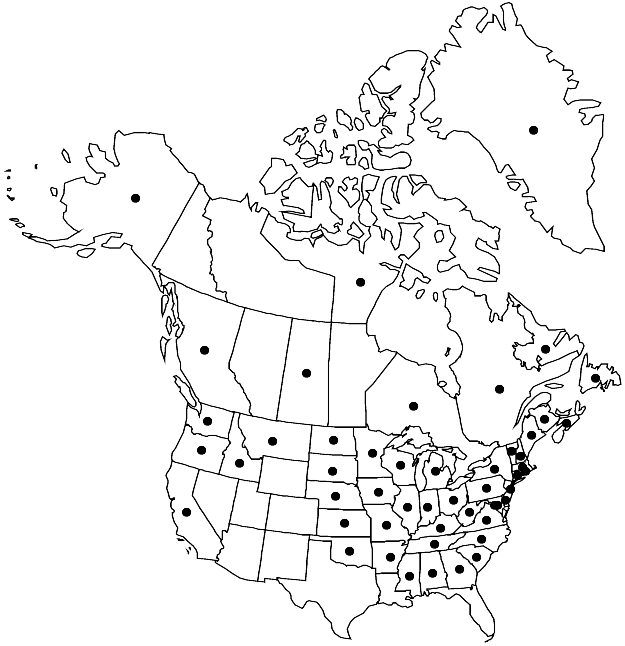Bartramia pomiformis
Sp. Musc. Frond., 164. 1801.
Plants in lax to dense tufts, green to glaucous, sometimes yellowish green. Stems 0.5–8 cm. Leaves flexuose to crisped when dry, laxly erect to erect-spreading when moist, narrowly lanceolate to linear, 4–7 mm; base scarcely sheathing, shoulders well developed, firm; margins revolute, coarsely toothed distally, teeth paired; apex subulate; costa excurrent, prominent, distal abaxial surface rough; basal laminal cell walls thin; medial and distal cells 4–15 × 4–8 µm, prorulae high. Sexual condition autoicous or synoicous. Seta 0.5–2.5 cm, flexuose. Capsule inclined, globose to ovoid, asymmetric, 1.5–2.5 mm; operculum conic convex; peristome double; exostome teeth 375–450 µm, granulose-papillose throughout; endostome basal membrane high, segments somewhat shorter than teeth, finely seriate-papillose, cilia rudimentary. Spores 20–26 µm.
Phenology: Capsules mature Feb–Nov.
Habitat: Soil, rock, base of trees, downed trunks, moist shady forests
Elevation: low to moderate elevations (0-1100 m)
Distribution

Greenland, B.C., N.B., Nfld. and Labr., N.S., Nunavut, Ont., Que., Sask., Ala., Alaska, Ark., Calif., Conn., Del., D.C., Ga., Idaho, Ill., Ind., Iowa, Kans., Ky., Maine, Md., Mass., Mich., Minn., Miss., Mo., Mont., Nebr., N.H., N.J., N.Y., N.C., N.Dak., Ohio, Okla., Oreg., Pa., R.I., S.C., S.Dak., Tenn., Vt., Va., Wash., W.Va., Wis., s South America (Tierra del Fuego), Europe, n, c, e Asia, n Africa, Atlantic Islands (Madeira).
Discussion
Bartramia pomiformis can be distinguished from the similar B. halleriana by the combination in the former of narrowly lanceolate to linear-lanceolate leaves, often crisped or flexuose when dry, together with the elongate seta that usually lofts the capsule above the foliage.
Selected References
None.
